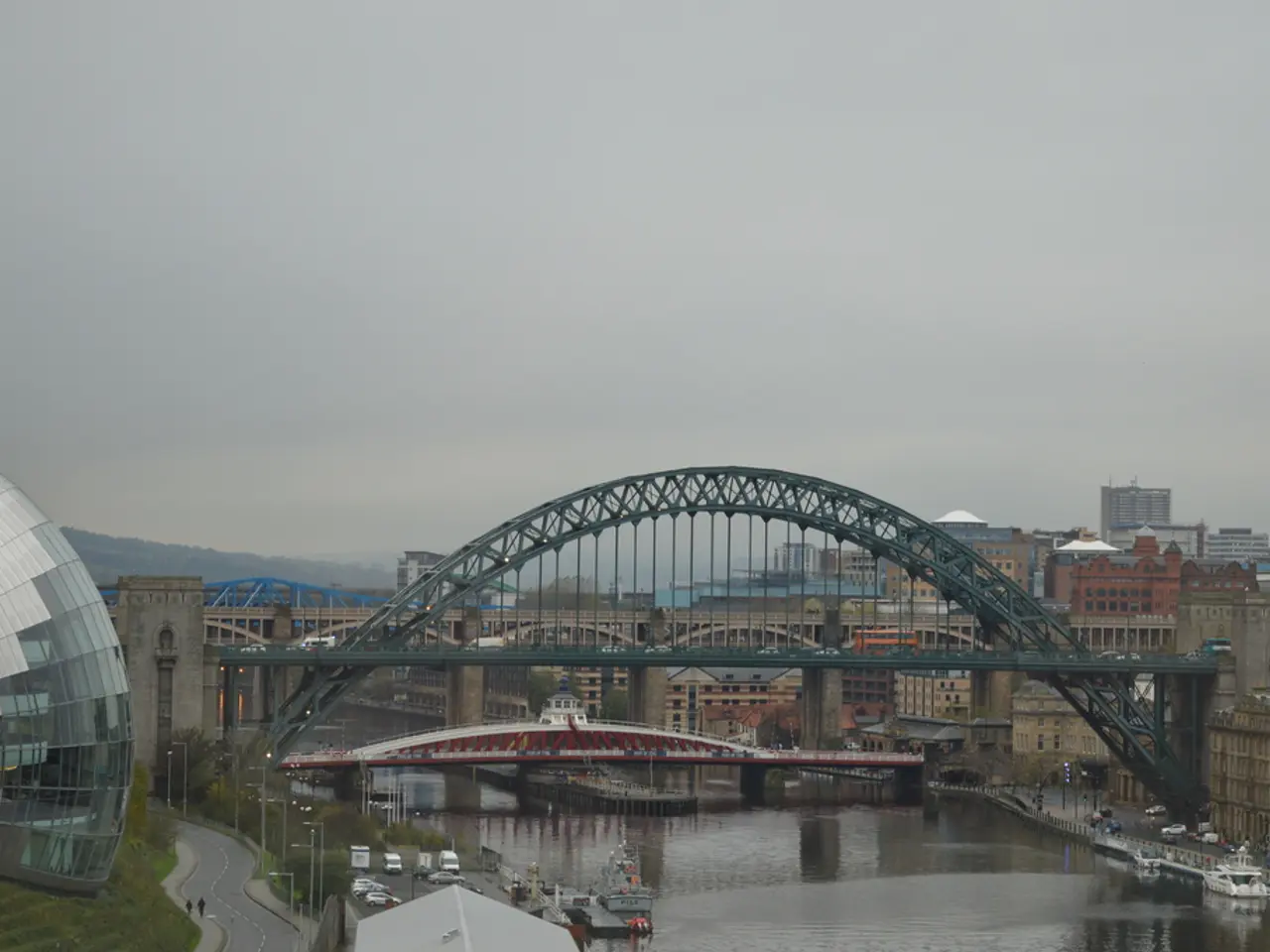The Era of Extensive Endeavors
Astana's Future: A Vision for Modern and Affordable Social Infrastructure
Astana, the rapidly growing young capital of the world, is gearing up for significant transformation over the coming years. According to the amended General Plan of the city, by 2035, Astana is expected to house a population of 2.275 million people, with a housing fund of 68.25 million square meters, providing an average housing provision of 30 square meters per person [1].
The development of Astana is guided by principles of compactness, polycentricity, and territorial balance. By 2028, it is planned to construct 705 residential objects, 207 educational institutions (16%), 131 commercial objects (10%), 61 healthcare objects (4%), 52 administrative buildings (4%), and 29 sports facilities (2%), 74 recreational objects and landscaping, and the reconstruction and construction of 19 fire stations (1%) [2].
The largest number of objects will be built in 2026 - 402 objects (31% of the total) [3]. This includes 224 residential buildings, 52 educational institutions, 21 healthcare facilities, 52 commercial objects, 16 administrative buildings, 9 sports facilities, 8 landscaping projects, 9 recreational facilities, 6 emergency facilities, 3 communal-industrial objects, and 1 for automotive service [4].
One of the key focuses of Astana's development is the integration of creative cultural-sports complexes. These complexes are designed to foster social cohesion and youth engagement, reshaping community life and reducing social problems. An example of such a complex, the Kosshy cultural-sports complex, offers a model featuring libraries, lecture halls, sports areas, and community engagement programs, with government support making many courses free or affordable [5].
Astana is also advancing smart urban infrastructure. Projects like the "Magic Pole," a multifunctional smart infrastructure unit integrating mobile base stations and street lighting, are enhancing network coverage and supporting smart city services. The deployment also includes autonomous hybrid-powered network units along highways, showcasing a commitment to sustainable, resilient connectivity crucial for the city's administrative and emergency service networks [6].
To support infrastructure and broader economic expansion, Kazakhstan plans to address a growing demand for up to 3 million skilled workers by 2028. This emphasis on education, training, and job placement through digital platforms and employment monitoring indirectly supports social infrastructure growth by ensuring sufficient skilled personnel in construction, education, healthcare, and municipal services [7].
Although detailed data on housing, schools, kindergartens, healthcare facilities, administrative buildings, and emergency services in Astana specifically are not provided, the combined efforts in cultural, digital, employment, and utility sectors signify a comprehensive trajectory towards modernizing and expanding social infrastructure with an emphasis on community engagement, inclusivity, sustainable technology, and workforce readiness.
While the right bank, the originally developed part of the city, has historically established dense construction, worn-out engineering communications, and old industrial objects, the revised general plan focuses on creating modern and affordable social infrastructure in Astana [8].
In summary, Astana's reconstruction and social infrastructure development are marked by integration of creative cultural-sports complexes, deployment of smart city technologies, government-led workforce strategies, and a commitment to upgrading utilities and energy systems, all aimed at building vibrant, sustainable, and socially supportive urban infrastructure in Kazakhstan's capital city.
References: 1. Astana's General Plan 2035 2. Astana's General Plan 2035 3. Astana's General Plan 2035 4. Astana's General Plan 2035 5. Kosshy Cultural-Sports Complex 6. Magic Pole Project 7. Kazakhstan's Workforce Development Plans 8. Astana's General Plan 2035
Astana's infrastructure development plan includes the construction of 29 sports facilities, ensuring ample opportunities for physical activities and promoting a healthy lifestyle. Furthermore, the Magic Pole project, integrating smart technology into infrastructure, will support sustainable, resilient connectivity essential for sports facilities and other administrative and emergency services.




